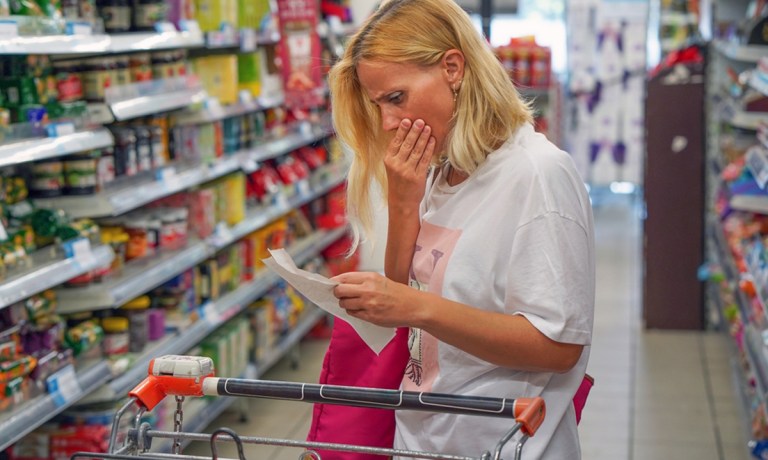
In economics, there’s often a bifurcation when it comes to data — the difference between what the headlines tell us and what the wallet feels.
Case in point: Septembers’ official reading on consumer price increases reflected an overall slowing pace of inflation — on an annualized basis — though the 0.2% month-over-month increase was “hotter” than some had expected.
That may be enough to push the Fed to cut rates again — perhaps as soon as its next meeting this month — and another 0.25% cut would likely be welcomed by investors.
But even though the annualized pace of inflation has slowed to 2.4% from the summer reading of 2.5%, and this is the lowest rate since the darkest days of the pandemic, the real cost of the most essential item we all need — namely, food — has remained sticky and stubbornly high.
The Bureau of Labor Statistic’s Consumer Price Index (CPI) data released Thursday (Oct. 10) shows that prices paid for food, overall, were 0.4% higher in September, as measured month over month — higher than the 0.1% rate seen in August, and the 0.2% rise seen in July.
With a bit more granularity, the prices for food consumed at home — namely, groceries — was up 0.4%, after having been flat to very slightly up in the previous several months. The index for “food away from home” consumed at restaurants and at other establishments, was somewhat entrenched, as prices were up 0.3% month over month in September, the same rate seen in August.

The CPI data also shows that five of the six major categories for food — spanning everything from meat to eggs to fruit — rose. In fact, the prices paid for the staples like meat, poultry, fish and eggs were significantly higher, annualized, than the overall pace of inflation, where those items were up a collective 3.9%. Fruits and vegetables were up 0.9% in September, while they had declined by about 0.2% in August. As for the food consumed at restaurants, the index for full service meals surged by 3.9% through the past year.
Elsewhere, we note that the cost of shelter also helped drive the overall pace of inflation, where the moderating 0.2% monthly bump in September still is tied to a 4.9% annualized surge, among the most significant line item increases in the entire list of categories tracked by the BLS.
Past data from PYMNTS Intelligence shows that the essential spending on food and shelter can grab the majority of the paychecks — a respective 25% and 37% — of the households making less than $50,000 per year. For households above that level, the situation is far less dire, at a cumulative 25% of take-home pay.
But the headline numbers may do little to cheer most households, given that the real prices paid are still rising, month by month. And it’s already fall, which means that budgeting’s starting to take shape for holiday spending — Prime Day and other promotions are happening this week, and Black Friday’s in just a few weeks. Far from feeling flush, we’re spending more bread to buy bread — literally.